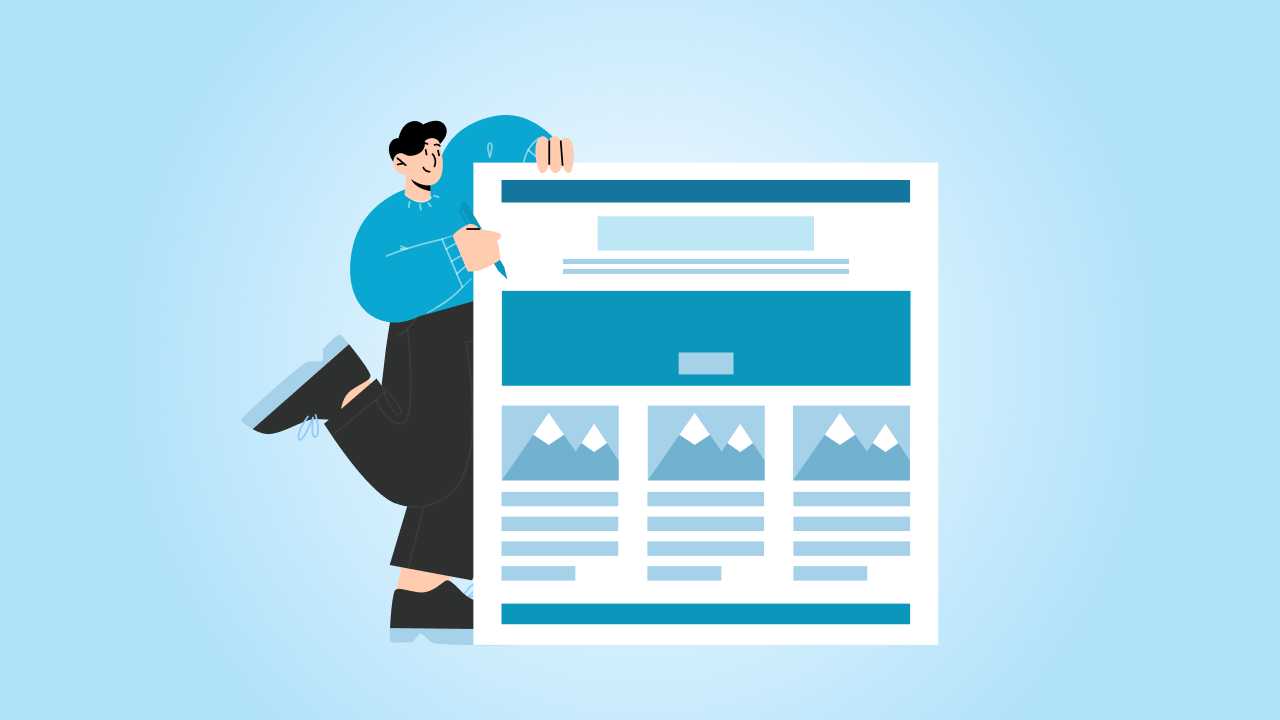Online shoppers have high expectations. They demand fast loading times, seamless navigation, and a smooth checkout. Anything less can lead to frustration and abandonment. A slow or poorly designed eCommerce website can severely damage your brand reputation and drive customers to your competitors’ sites.
This post addresses the crucial aspects of eCommerce website performance, offering actionable advice on meeting and exceeding these expectations. We will delve into key areas such as search engine optimization and website optimization to ensure your website delivers a positive user experience and drives business growth.
Let’s dive in and learn more!
Search Engine Optimization (SEO)
Search engine optimization (SEO) drives organic traffic to your eCommerce website. It includes two things: on-page SEO and off-page SEO.
On-page SEO is about optimizing your website and its content to improve visibility, relevance, and user experience for both search engines and visitors.
On the other hand, off-page SEO is about strengthening the back of your website. Building backlinks using custom blogger outreach or asking them to link back to your website. This helps in improving the authority of your website. Here’s in detail:
On-Page SEO
On-page SEO focuses on optimizing elements within your website itself, including content, HTML structure, meta tags, internal linking, and overall user experience, to ensure your site ranks higher in search engine results and delivers valuable information to visitors. This includes:
- Keyword Research and Implementation: Identifying relevant keywords that your target audience uses when searching for products like yours is the foundation of effective SEO. These keywords should be naturally integrated into your website’s content. Avoid keyword stuffing, as it can negatively impact your search rankings.
- Title Tags and Meta Descriptions: These elements appear in search engine results pages (SERPs). Title tags should accurately reflect the page’s content and include relevant keywords.
- Header Tags (H1-H6): Header tags help structure your content and make it easier for both users and search engines to understand the hierarchy of information on your pages. Use H1 tags for main page titles, H2 tags for subheadings, and so on. Include relevant keywords in your header tags where appropriate.
- Site Structure and Navigation: A clear and logical site structure makes it easier for search engines to crawl and index your website. Ensure your navigation is intuitive and easy to use.
Off-Page SEO
Off-page SEO involves building your website’s authority and reputation through external factors. A key component of off-page SEO is link building. Earning high-quality backlinks from reputable websites is essential for improving your search rankings. If you need assistance with this process, consider working with an eCommerce link-building agency specializing in this area. They can help you by choosing quality websites in your niche and publishing content on those with your website’s link.
Some effective link-building strategies include:
- Guest Blogging: Contributing high-quality articles to other relevant websites in your industry can help you earn valuable backlinks and establish yourself as an expert.
- Blogger outreach: Connecting with bloggers and influencers in your niche can help you earn valuable backlinks and reach a wider audience. Building relationships with relevant bloggers is a great way to improve your site’s authority.
- Directory Submissions: Submitting your website to relevant online directories can also help you earn backlinks. However, it’s important to be selective and focus on high-quality directories.
- Social Media Engagement: Social media links may not directly impact search rankings. A strong social media presence can drive traffic to your website and increase brand visibility.
Technical Optimization
Technical optimization forms the foundation of a high-performing eCommerce website. It focuses on improving the underlying infrastructure of your site to ensure fast loading times, efficient resource utilization, and optimal performance for both users and search engines. Neglecting technical optimization can lead to slow loading times, poor user experience, and lower search engine rankings.
Image Optimization
Large, unoptimized images are a common culprit behind slow page load times. Proper image optimization involves several techniques:
- Compression: Reducing file sizes without significantly sacrificing image quality. Tools like TinyPNG, ImageOptim (Mac), and ShortPixel can help.
- Proper File Formats: Use the appropriate image format for each image. JPEG is generally suitable for photographs, while PNG is better for graphics with sharp lines and text. WebP is a modern image format that offers excellent compression and quality.
- Lazy Loading: Load images are only allowed when visible in the user’s viewport. This improves initial page load time and reduces bandwidth consumption.
- Responsive Images: Serving different image sizes based on the user’s device and screen size. This ensures that users on mobile devices don’t download unnecessarily large images.
Caching
Caching stores static files (like images, CSS, and JavaScript) on the user’s browser or a content delivery network (CDN). This reduces the number of requests the server needs to handle, resulting in faster loading times for subsequent visits.
- Browser Caching: Instructing the browser to store static assets locally.
- CDN (Content Delivery Network): Distributing your website’s content across multiple servers located in different geographical locations. This allows users to access content from a server closer to them, reducing latency and improving loading times.
Minimizing HTTP Requests
Every component of a webpage, such as images, scripts, and stylesheets, necessitates an HTTP request. Reducing the number of these requests can significantly improve page load speed. This can be achieved by:
- Combining CSS and JavaScript Files: Merging multiple CSS and JavaScript files into fewer files.
- Minifying CSS and JavaScript: Removing unnecessary characters (whitespace, comments) from code to reduce file sizes.
Database Optimization
An efficiently designed and maintained database is much needed for optimal website performance. This includes:
- Optimizing Database Queries: Ensuring that database queries are efficient and don’t take excessive time to execute.
- Database Indexing: Creating indexes on frequently queried columns to speed up data retrieval.
User Experience (UX) Optimization
User experience (UX) optimization focuses on creating a seamless and enjoyable experience for visitors to your eCommerce website. A positive UX not only encourages repeat visits and builds brand loyalty but also directly impacts conversion rates and sales. A website that is easy to navigate, visually appealing, and provides a smooth shopping experience is more likely to convert visitors into paying customers.
Mobile-First Design
With the majority of online shoppers using mobile devices, a mobile-first approach is highly important. This means designing your website primarily for mobile screens and then adapting it for larger screens.
A responsive website design ensures that your website adapts seamlessly to different screen sizes and devices, providing a consistent experience across all platforms. Google employs mobile-first indexing, which prioritizes the mobile version of a website for indexing and ranking purposes.
Intuitive Navigation
Clear and easy navigation is essential for helping users find what they are looking for quickly and easily. Implement a logical site structure, use clear menu labels, and provide a prominent search bar. Consider implementing faceted navigation (filtering and sorting options) on category pages to help users narrow their search.
Fast Page Speed
Page speed is another critical aspect of UX. Users expect websites to load quickly, and they are likely to abandon sites that take too long. Optimize images, leverage caching, and minimize HTTP requests to improve page load times. You can use tools like Google PageSpeed Insights and GTmetrix to identify areas for improvement.
High-Quality Product Images and Descriptions
High-quality product images are essential for showcasing your products and enticing customers to make a purchase. Use multiple images from different angles and allow users to zoom in for closer inspection. Write detailed and informative product descriptions that highlight key features and benefits.
Accessibility and Simple Checkout Process
Ensure your website is accessible to users with disabilities. This includes providing alt text for images, using appropriate color contrast, and ensuring keyboard navigation is possible.
Difficult or time-consuming checkouts can contribute to high rates of cart abandonment. Simplify the checkout process by minimizing the required steps, offering guest checkout options, and providing multiple payment options. Display shipping costs and delivery times.
Tools and Technologies
Several tools and technologies can assist in optimizing eCommerce website performance. These resources offer valuable insights and functionalities for identifying areas of improvement and tracking progress.
- PageSpeed Insights (Google): This tool analyzes page speed and provides recommendations for improvement, focusing on both mobile and desktop performance. It offers specific suggestions related to image optimization, caching, and other technical aspects.
- GTmetrix: GTmetrix combines data from PageSpeed Insights and YSlow to provide a comprehensive performance analysis, offering detailed reports and actionable recommendations.
- Google Search Console: This platform provides valuable data about your website’s performance in Google Search, including crawl errors, indexing issues, and keyword rankings.
- Google Analytics: This analytics platform tracks website traffic and user behavior, providing insights into how users interact with your website. This data can inform UX optimization efforts.
- Ahrefs, SEMrush, Moz: These are comprehensive SEO suites that offer tools for keyword research, backlink analysis, site audits, and competitor analysis. They are essential for optimizing your website’s visibility in search engines.
These tools, when used effectively, can provide valuable data and insights to guide your optimization efforts and ultimately improve your e-commerce website’s performance.
Conclusion
Optimizing your eCommerce website’s performance is an ongoing process, not a one-time fix. By focusing on technical improvements, user experience enhancements, and effective SEO strategies, you can create a website that not only attracts more visitors but also converts them into loyal customers.
Remember to regularly monitor your website’s performance using the tools mentioned and adapt your strategies as needed to stay ahead of the curve and provide the best possible experience for your users. This consistent effort will increase conversions, higher customer satisfaction, and greater business success.





